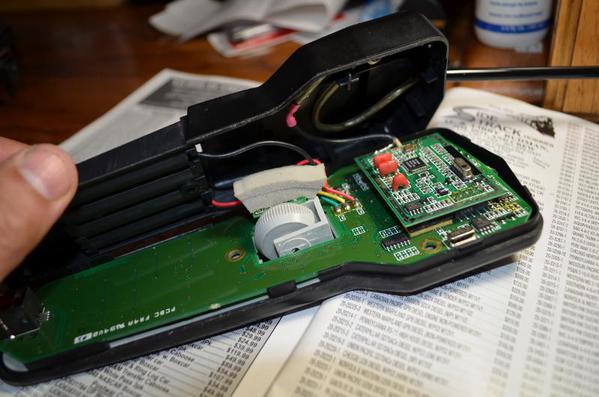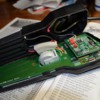I made a BIN post for a thumb-wheel assembly (BG-5000000), and had a thought:
Am I (and others who tend to break them more frequently than others) "heavy handed", or could it be something else?
As a retired electronic technician, formerly in the USAF, I'm very familiar with the remote's electrical keypad concept. It involves two parts:
a) Interlaced traces (fork-like) etched on the PCB, not solder-masked...obviously
b) A carbon impregnated (or similar conductive source) rubber pad that when forced against the PCB, produces a resistive short against the PCB. This is read by the CPU/MPU as a keypress and is handled by the firmware accordingly.
I've had great success (about 98%) cleaning both the rubber and PCB on many remotes with isopropyl alcohol, restoring them to full functionality. The remaining 2% that couldn't be repaired had a conductive coating that the alcohol removed, usually ruining the button permanently. {I say "usually" because I had great success back-in-the-day using a product called "liquid solder", to paint the rubber portion, and the remote worked perfectly once again. Heck, this was 15 years ago and I don't even know if they sell the product any more}.
So, the theoretical question is: Are people "heavy handed" or is it that the button-press on the PCB isn't making good contact, forcing the user to press unreasonably hard?
I can't answer that, but it would be interesting to hear from people who fix these things often, and see if they can confirm if it's user related (because the user has more than one remote that has the same failure), or can disprove this hypothesis by not just replacing the thumbwheel, but the remote too.
Community thoughts?






